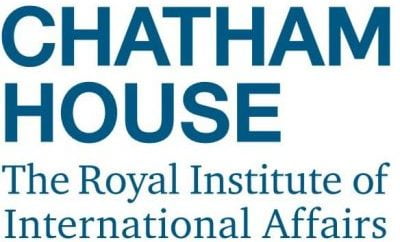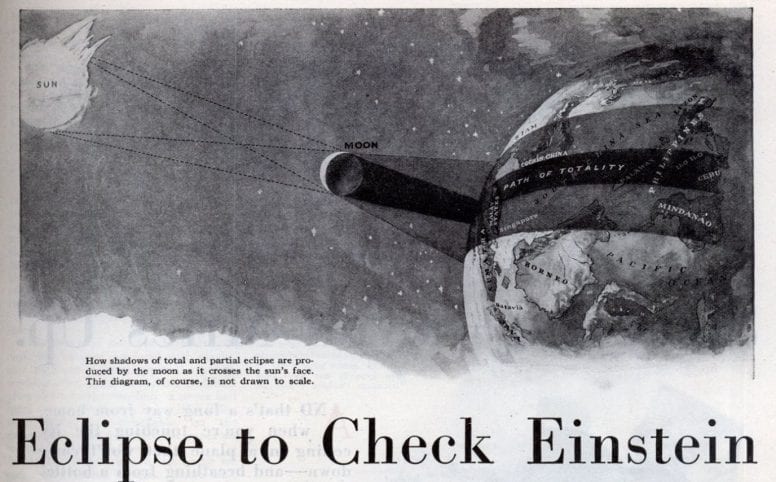The Council on Foreign Relations is well known amongst researchers of parapolitics as one of the organizations of interest directing Washington’s foreign policy. Once derided as “conspiracy theory” the influence of the group is now a truism that is openly joked about in Washington’s foreign policy circles.
What many do not know, however, is that the CFR is in fact a branch of a slightly older, slightly less-known organization: the Royal Institute of International Affairs. Born from the ashes of war-ravaged Europe following the Great War, the idea for the RIIA was forged at an informal session during the 1919 Paris peace conference. The Institute was formalized the next year, first as the British Institute of International Affairs, and then, after receiving its Royal Charter, as the Royal Institute of International Affairs.
The group became synonymous with Chatham House, its headquarters in St. James’ Square, London, and is widely recognized among foreign policy experts as the most influential think tank in the world.
In the years since its inception, the RIIA has opened branches in countries across the British Commonwealth and around the world, including the Council on Foreign Relations, born largely from the same 1919 Paris meeting that birthed the Institute itself, the Australian Institute of International Affairs, the South African Institute of International Affairs, the Pakistan Institute of International Affairs, the Canadian International Council, and similar organizations.
Officially, the Royal Institute of International Affairs, like its various branch organizations, is a non-profit, non-governmental think tank that promotes analysis of international issues and world affairs in four main research areas: Energy, Environment and Resources, International Economics, International Security, and Area Studies and International Law. Also like its branch organizations, the majority of the group’s publications and proceedings are open to the public and freely available via their website or their journal, International Affairs.
Funded by partners, patrons and corporate members that read like a Who’s Who of the Fortune 500, including Chevron, AIG, Bloomberg, Toshiba, Morgan Stanley, Goldman Sachs, Lockheed Martin, Royal Dutch Shell, the European Commission, and dozens of other corporations, institutions and foreign governments, Chatham House consistently attracts some of the best known speakers on a wide range of topics, releasing reports that set the global policy agenda, not only for Britain, but for much of the rest of the developed world as well.
Although the majority of its activities are publicly accessible, it is, perhaps tellingly, for its policy on keeping certain meetings private that the organization is best known. The policy is called The Chatham House Rule and states:
“When a meeting, or part thereof, is held under the Chatham House Rule, participants are free to use the information received, but neither the identity nor the affiliation of the speaker(s), nor that of any other participant, may be revealed.”
The rule is ostensibly invoked to encourage debate on contentious issues, the theory being that prominent individuals would not be willing or able to discuss their full views on these subjects if their identity and affiliations were to be publicly known. Some of the most infamous and criticized secretive meetings in the world, including the Bilderberg conference, adhere to Chatham House Rules, inviting charges of secrecy and hidden influence.
When it comes to a group like the Royal Insitute of International Affairs, it is hard to argue that such charges are misplaced.
In a January 2013 report on The Eyeopener, author G. Edward Griffin presented the history of the Round Table group founded by Cecil Rhodes and how it functioned as a structure of “rings within rings” where the members of the outer, public Round Table fronts had little understanding of what went on in the inner circles of the group’s secretive core membership. It was precisely from this Rhodes-created secret society that the Royal Institute of International Affairs and its various branches, including the Council on Foreign Relations, emerged.
According to noted historian, Brookings researcher, Defense Department consultant and Bill Clinton mentor, Professor Carroll Quigley, the genesis of Rhodes’ Round Table Group emerged from a meeting in February 1891 between Cecil Rhodes, journalist William Stead and the future Lord Esher, Reginald Baliol Brett. In this conversation it was decided that the group would be divided into an inner circle, called “The Society of the Elect,” and an outer circle, known as “The Association of Helpers.” Within The Society of the Elect would be a core group, including Rhodes himself and a so-called “Junta of Three,” who would in fact exercise authority within the overall organization. The Junta was to consist of Stead, Lord Esher, and Alfred Milner.
Milner was a journalist who was plucked from obscurity by Stead, who made him assistant editor at the Pall Mall Gazette. After a series of political appointments, Stead and Rhodes used their influence to have him appointed High Commissioner for Southern Africa in 1897, an important and influential position in the years leading up to the Boer War. Milner mentored a group of young lawyers and administrators, mostly affiliated with Oxford University, who became known as “Milner’s Kindergarten.” These figures went on to become some of the most influential figures in the foreign affairs of the early 20th century British Empire, including Lord Lothian, Philip Henry Karr, Robert Henry Brand of Lazard Brothers, 1st Baron Tweedsmuir, and Lionel Curtis, the founder of the Royal Institute of International Affairs.
In a rare recorded interview, Professor Quigley described in detail how this Rhodes-founded Round Table Group exerted power in international affairs in the first half of the 20th century through organizations like Chatham House
According to Quigley, the group was responsible for the Boer War, the establishment of the Rhodes Trust, the control of The Times, the formation of the League of Nations, the formation of the Royal Institute of International Affairs, and the appeasement of Nazi Germany, amongst other events.
In recent years, Chatham House, its most visible mouthpiece, has been responsible for reports on why gold is not a viable alternative to the current international monetary system, an analysis of the 2009 Iranian election that informed reports around the globe about the “irregularities” of that election, an op-ed from the British Foreign Secretary urging for a thoroughgoing weaponization of cyberspace, amongst many other influential documents, publications, conferences and presentations.
In the end, what is perhaps most intriguing to those who are interested in examining how power functions in society is not necessarily the secretive origins of a group like the Royal Institute of International Affairs, or even the way that it has covertly manipulated, shaped and controlled British foreign policy for decades, or how it has managed to wield such considerable influence over world affairs through its various branch organizations. Instead, what is most fascinating about Chatham House is that it is so very much open.
Many of its meetings and proceedings are publicly available. It’s partners and corporate members are published on its website. Its journal is accessible to all. Its history, once shrouded in mystery, has been laid bare for over half a century thanks to the work of scholars like Quigley. And yet still, for all that, the RIIA is rarely discussed as an important power centre in 21st century society.
In some ways, perhaps this is its greatest accomplishment: to hide its enormous influence and its ongoing role in steering global geopolitics, not by hiding under a blanket of secrecy like the Bilderberg Group, Skull and Bones, or other secret societies, but by putting itself so much in the public spotlight that it seems mundane. It should be noted, after all, that this is precisely the way that Rhodes envisioned such an organization to function, and the continued existence and influence of that idea, manifested most openly in Chatham House, the CFR, and their brethren think tanks around the world, might serve as the perfect example of how some of the world’s biggest secrets are hidden in plain sight.
*****
The Illuminati in 1919 created the Royal Institute of International Affairs (RIIA). The Astor Illuminati family were major financial backers of the RIIA. Waldorf Astor was appointed to the RIIA. The American equivalent to the RIIA is the CFR. The RIIA and CFR set up Round Table Groups (based on the King Arthur myths) which were initially named by Cecil Rhodes “Association of Helpers“. Deeper Insights 4. The Use of Hypnosis
The Royal Institute of International Affairs is the same as the American Council on Foreign Relations (CFR). The Royal Institute runs England and the British Empire, what was once the extension of the British, just as the CFR runs our country. They’re sister organizations. The Black Pope: Interview of Eric Jon Phelps
According to MAJESTY TWELVE the Knights Templar have become the driving influence at the highest levels of all the secret societies among the adepts known as the Illuminati. The most accessible font of their influence will be found in the (Cecil Rhodes) Roundtable Group (The Group), The Royal Institute Of International Affairs, the Church of Saint John the Divine in New York City, the Council On Foreign Relations, the Jason Society, the Skull and Bones Society (Russell Trust), the Scroll and Key Fraternity, the highest Degrees of the York and Scottish Rites of Freemasonry, the Ancient Order of Rosae Crucae, and many other secret societies which collectively make up the modern equivalent of the “Brotherhood of the Snake” also known as (a.k.a.) the “Guardians,” the “Builders,” the “Philosophers of Fire,” or the “Illuminati”.MAJESTY TWELVE by William Cooper
In 1891, [Cecile] Rhodes organized a secret society with members in a “Circle of Initiates” and an outer circle known as the “Association of Helpers” later organized as the Round Table organization. In 1909-1913, they organized semi-secret groups known as Round Table Groups in the chief British dependencies and the United States. In 1919, they founded the Royal Institute of International Affairs. Similar Institutes of International Affairs were established in the chief British dominions and the United States where it is known as the Council on Foreign Relations. After 1925, the Institute of Pacific Relations was set up in twelve Pacific area countries. They were constantly harping on the lessons to be learned from the failure of the American Revolution and the success of the Canadian federation of 1867 and hoped to federate the various parts of the empire and then confederate the whole with the United Kingdom. … There does exist and has existed for a generation, an international Anglophile network which operates to some extent in the way the Radical Right believes the Communists act. In fact, this network, which we may identify as the Round Table Groups, has no aversion to cooperating with the Communists, or any other groups, and frequently does so. I know of the operations of this network because I have studied it for twenty years and was permitted for two years, in the early 1960s, to examine its papers and secret records. I have no aversion to it or to most of its aims and have, for much of my life, been close to it and to many of its instruments. I have objected, both in the past and recently, to a few of its policies but in general my chief difference of opinion is that it wishes to remain unknown, and I believe its role in history is significant enough to be known. – (Georgetown University Professor Carroll Quigley, Tragedy and Hope, p. 324. 1966.)



